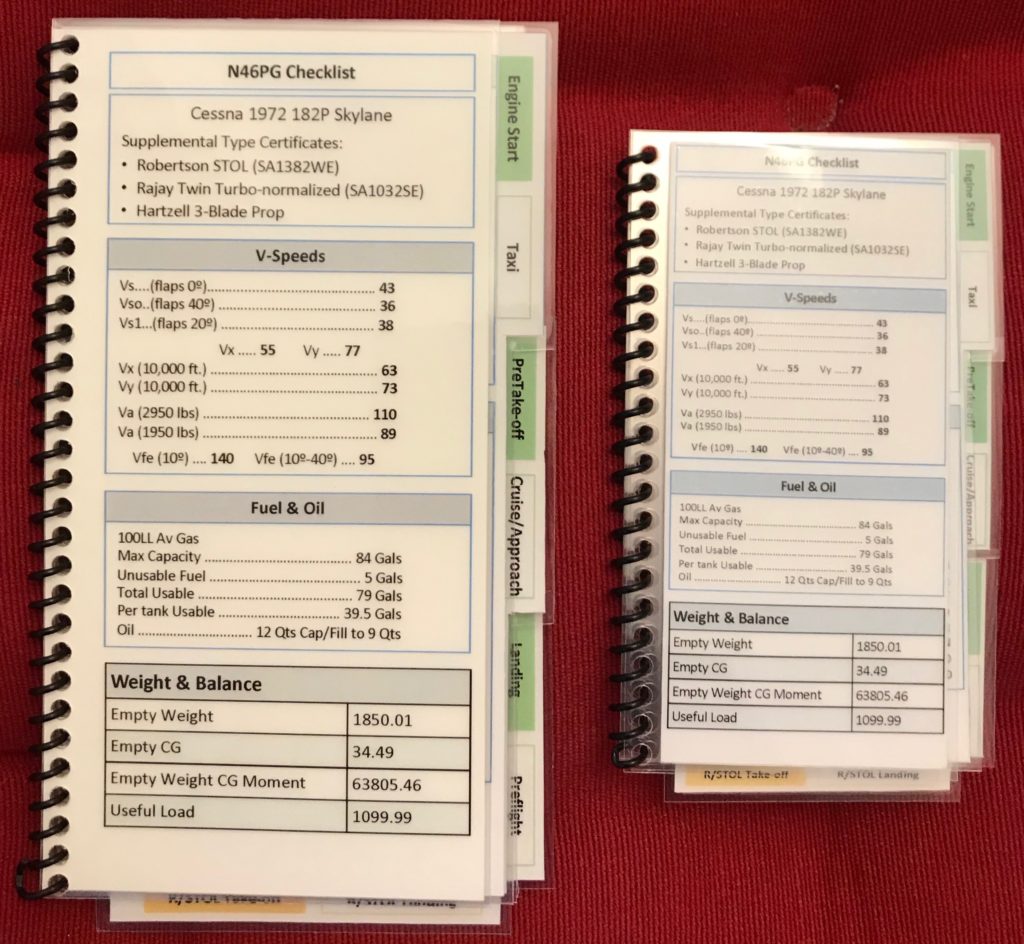GreatLakesFlying
Pre-takeoff checklist
During my primary training, I started typing my own checklists, mostly as an exercise to commit tasks to memory, and establish a process flow that was more ergonomic and cleaner than the flight school's. One thing led to another, the inner geek kicked in, and I have automated the entire design process. I use a database to capture items and actions and a simple script to produce the actual checklist.
I strive to keep the workflow intuitive and clear. To that end, I'd welcome any feedback for the checklists I've developed. The list below is for the DA40 but the task flow should be familiar to any ASEL pilot. This list is based on the POH, just organized a bit differently, in a way that makes sense to me. Any suggestions will be greatly appreciated.
If the pages seem to be out of order, it is because they are arranged so that they can print as an 8x5.5" booklet that I bind with loose leaf binder rings.
Here's the masterpiece: Leo's DA40 XLS checklists. I welcome your feedback either as direct comments on the Google Doc or as posts here. I will summarize any Google Doc comments, here on this thread in a few days. If you are not too fond of Google Docs, I am also attaching a PDF copy.
I strive to keep the workflow intuitive and clear. To that end, I'd welcome any feedback for the checklists I've developed. The list below is for the DA40 but the task flow should be familiar to any ASEL pilot. This list is based on the POH, just organized a bit differently, in a way that makes sense to me. Any suggestions will be greatly appreciated.
If the pages seem to be out of order, it is because they are arranged so that they can print as an 8x5.5" booklet that I bind with loose leaf binder rings.
Here's the masterpiece: Leo's DA40 XLS checklists. I welcome your feedback either as direct comments on the Google Doc or as posts here. I will summarize any Google Doc comments, here on this thread in a few days. If you are not too fond of Google Docs, I am also attaching a PDF copy.



